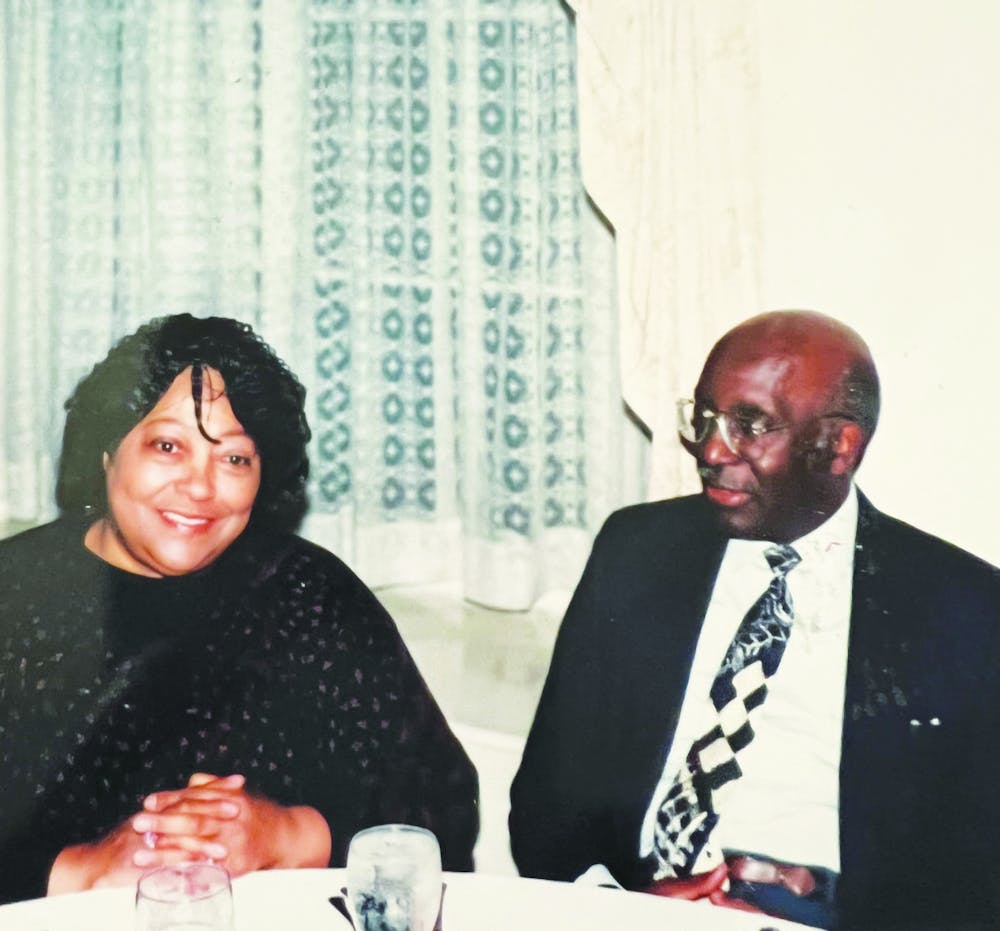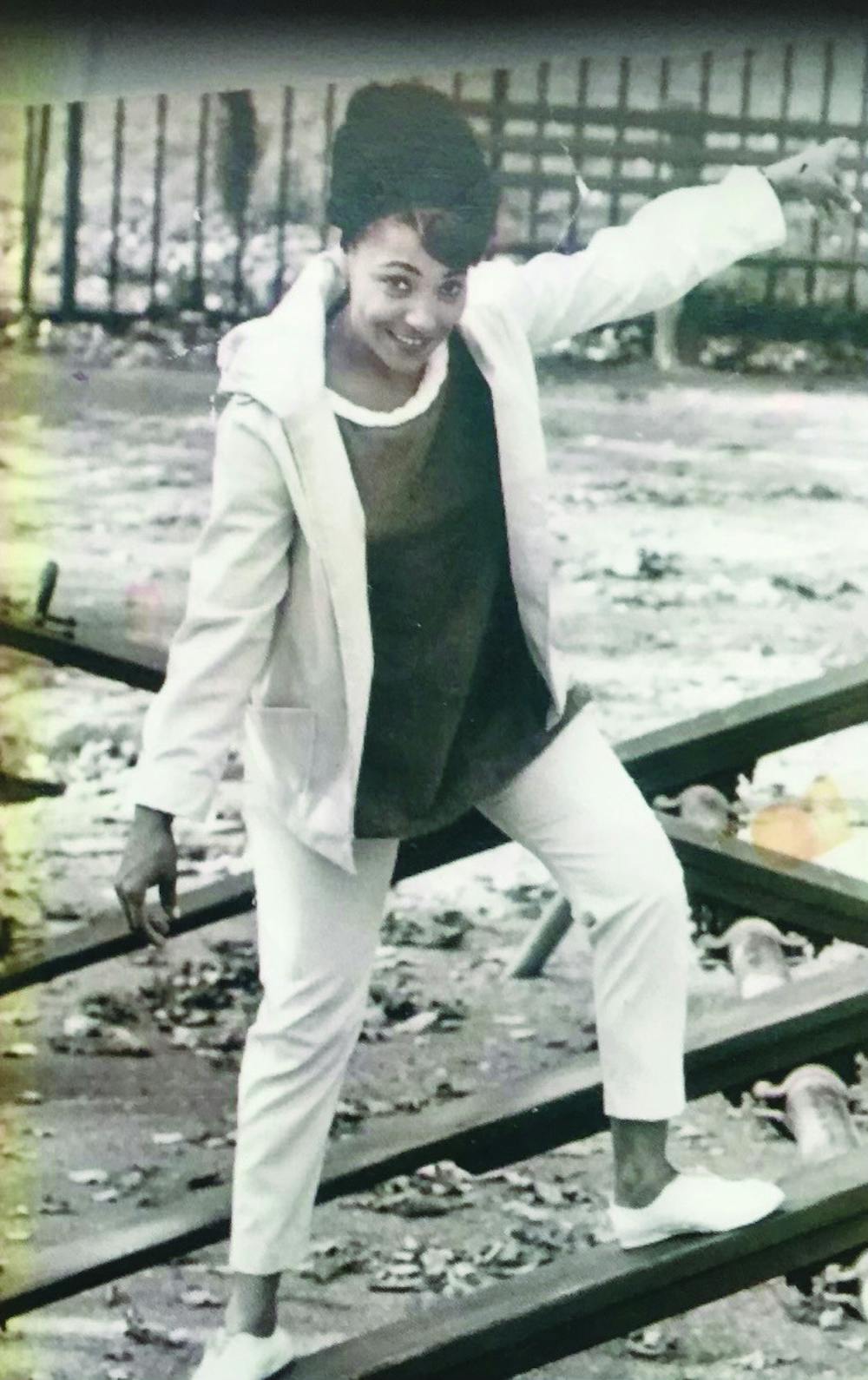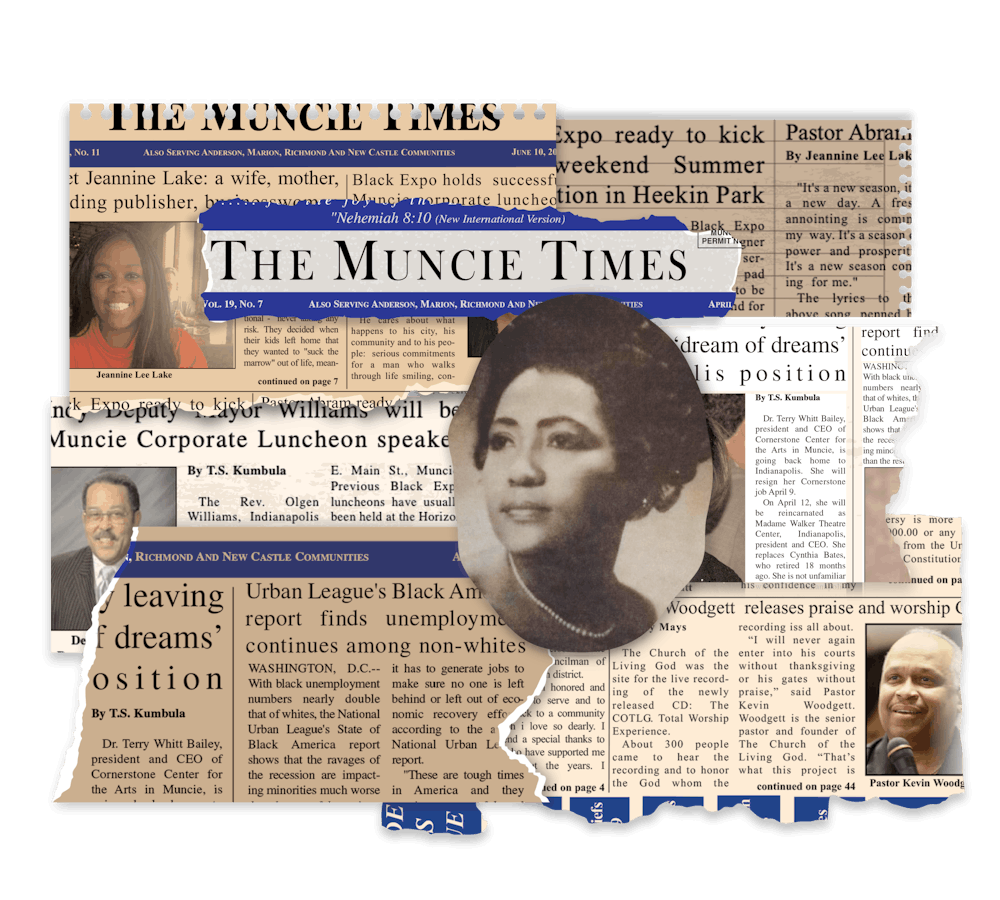Beatrice “Bea” Moten-Foster wouldn’t go away.
At 18 years old, she got her first job at a radio station in Birmingham, Alabama, with no prior experience solely because she kept bothering the radio station for a spot. Despite being turned down multiple times, that slot eventually opened when Alma Powell, wife of the late Colin Powell, had to leave the station to travel with Colin for the military, and Moten-Foster was finally given a chance. She went on to do radio and television in many cities, including Miami, New York City and Indianapolis.
During her time in Miami, she became good friends with Muhammad Ali. Her daughter, pastor and sixth grade teacher Pamela Emmanuel, said there was a ritual of visiting him at one of his training camps in Chicago while Emmanuel was in school. When Moten-Foster took her daughter shopping for fall clothes, Ali joined them, without fail, to go to lunch and take the pair on a neighborhood tour.
“He would make all the young people in the neighborhood crazy because he was in their midst,” Emmanuel said.
She also remembered being with her mother on an outing in a car in the lane next to former President John F. Kennedy, who was sitting on the back of a convertible with young models campaigning at the time.
While in New York City, Moten-Foster became the first African American to host a radio program at the United Nations, where she interviewed African diplomats. Upon moving from New York City to Indianapolis, Moten-Foster opened the first African-American modeling school while continuing to work in radio and television. During her time in Indianapolis, she met her husband, former director of the Office of Multicultural Affairs at Ball State University Dr. Robert O. Foster, while at the Indiana Black Expo. He was recruiting for the university, while Moten-Foster was promoting “200 Years of Black Cookery,” a cookbook she worked on and published through the Black Bicentennial Committee, which she sat on.
After getting married, she moved from Indianapolis to Muncie. The transition from Indianapolis, where radio and television was, to Muncie led to a lot of boredom for Moten-Foster, her daughter said. Moten-Foster continued her community activism in the city, helping establish the Muncie Black Expo and the Muncie Coalition of 100 Black Women, among other achievements. Still, she had her sights set on another project.
“She got herself involved in a number of community activities also with her church, but her blood was in things and information sharing and exchanges with people,” Emmanuel said. “She found a deficit in Muncie and decided that she would fill that.”
Emmanuel said Moten-Foster made the decision to create a newspaper in Muncie similar to the Indianapolis Recorder, an African-American-owned publication. When Ball State was having a sale on equipment, she asked her husband to borrow $50 to purchase a printer’s desk, who declined to do so because Moten-Foster only had experience in radio and television at the time. She assured him she would learn, and she could do it, officially beginning what became The Muncie Times, Muncie’s first bi-weekly, African-American newspaper.

Journalist and politician Jeannine Lee Lake first met Moten-Foster in 1990 while covering events for The Muncie Star, the city’s morning newspaper at the time. The two became friends prior to Lake starting to do correspondent work for The Muncie Times in 2000. She said Moten-Foster hoped to bridge a gap in news coverage from other publications in the city at the time.
“I think she felt like there were some missing events and that they just didn't cover minorities very well other than just sports and crime. The minority communities were relegated to the back pages,” Lake said. “She just felt, with the right evidence, that we were marginalized and disenfranchised, and that’s why she decided to do it with zero experience in print.”
Moten-Foster started recruiting her team. She reached out to John Lambkun to help her as the managing editor of the newspaper. Along with him were local designers, freelance writers and professors, students and interns from Ball State. She struggled, going as far as sometimes selling her personal belongings to ensure The Muncie Times would print, Lake said.
“She had to convince people that she had a viable product and convince people to invest in something that they had never really had before,” Lake said.
Adrian Barrett worked the phones and did odd jobs for The Muncie Times after graduating high school in 1994 before eventually transitioning into graphics and design for the paper in 2005. When the previous designer, Patty Haisley, had to quit because of family issues, Barrett thought he could fulfill her role. He was sent by Haisley with a list of things to buy, including a Mac computer and some programs. Haisley then came in some nights to teach him how to do it.
Barrett initially met Moten-Foster through the Christ Temple Church, in which they both attended in Muncie. He described his relationship with Moten-Foster and her husband as if they were his grandparents, pushing him to succeed.
“She was kind of hard on me when I was a kid. You would think that, but it wasn't necessarily her being hard; it was more of her seeing potential in people,” he said. “She saw potential in me, so she was going to make sure that I was going to be successful, even if it was against my will.”
When the paper ended publication following health issues and Moten-Foster’s death in 2011, the circulation had reached over 10,000, Muncie local and member of the Delaware County Historical Society Christopher Flook said.
“[The Muncie Times] was a huge community staple,” Flook said. “And because the focus was on African-American history, it provided more information about the community that I don't know we would have been able to learn about had [Moten-Foster] not produced the paper.”
Lake said The Muncie Times was delivered to all the Black churches in Muncie, somewhere between 20 and 30, at that time.
“Those congregations every other week were very dependent on getting The Muncie Times, because it was very, very important to get your hands on that, especially back in those days, because it was before everybody was online,” she said.
Prior to publication ceasing, Emmanuel and her daughter, Ebonye Crowe, attempted to run the paper from Indianapolis. Emmanuel described it as “frightening” and said while she and her daughter were incredibly concerned with the legacy of the paper, the distance became too physically and mentally draining to balance with their own careers. After a conversation with one of her father’s best friends, David Fairley, she was given the assurance she needed to let go of trying to preserve her mother’s legacy.

“[Fairley] said to me, ‘Darling, it is not your responsibility. Her legacy was fulfilled through her. The Muncie Times’ legacy will stand on its own,’” Emmanuel said. “And when he told me that, there was a release for me in my heart because I wanted to please my mother always. I’m her only child, and I always wanted her to be proud of whatever I did, but with that statement and his pouring into my soul, I knew that it was okay. It was time to close her life. She fulfilled all of that, and it was not up to me.”
Moten-Foster was honored on multiple occasions throughout her lifetime. She was the recipient of Sagamore of the Wabash Award, the highest honor from a sitting governor in the state of Indiana, from former Governor Evan Bayh. She had a saying that, though originally attributed to Eleanor Roosevelt, became a family mantra and a good representation of Moten-Foster’s character, Emmanuel said.
“At an early age, [Moten-Foster] told me to never accept no from a person who doesn't have the power to say yes,” Emmanuel said. “My mother accomplished a lot of firsts in her lifetime, and all of it had to do with reaching for something and not being swayed or deterred by anyone who told her she couldn’t.”
Barrett described Moten-Foster “like a storm,” or as a person who would come in the room, shake things up and leave.
“Mrs. Foster was a pioneer. Mrs. Foster led a lot of things in Muncie. All of those entities there, in my opinion, have not been the same since her passing, and I'm not saying that those people aren't trying to do a good job, but Mrs. Foster, she carried a lot of weight in the community,” he said. “She could get a governor on the phone as quick as she could get McDonald's on the phone. Her strength and her reach was long, and the respect that people have for her was great.”
Lake echoed these sentiments, speaking more specifically to the impact she felt The Muncie Times had on the community.
“[Moten-Foster] knew her influence because she fought to engineer that influence. She was a Black woman who had to not only bust open the glass ceiling; she had to bust down doors,” Lake said. “[The Muncie Times] made Black people proud to be Black. It made the reporters, like myself, have a place in mainstream journalism. It made us feel like we could go out there and do something important and write important stories.”
Emmanuel described The Muncie Times’ legacy as “love, concern and advocacy for community” and “serving with audacity.” Of all the places her mother lived during her life, Muncie was the city Moten-Foster spent most of her lifetime in.
“We went from Selma to Birmingham to Miami to Nassau, Bahamas, to New York City to Long Island, Manhattan and Indianapolis, but she spent most of her lifetime in Muncie,” she said. “I believe that love kept her there. Love for Dad and love for that community.”
Contact Evan Chandler with comments via email at eachandler@bsu.edu or on Twitter @evanachandler.





The Daily News welcomes thoughtful discussion on all of our stories, but please keep comments civil and on-topic. Read our full guidelines here.